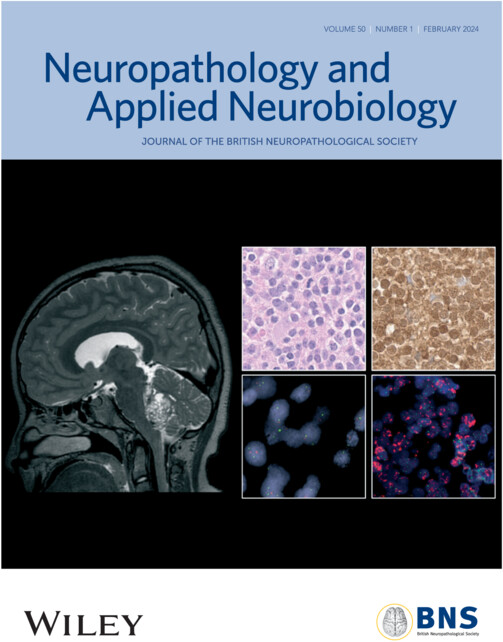Pathogenic DPAGT1 variants in limb-girdle congenital myasthenic syndrome (LG-CMS) associated with tubular aggregates and ORAI1 hypoglycosylation
IF 3.4
2区 医学
Q1 CLINICAL NEUROLOGY
引用次数: 0
Abstract
Limb-girdle congenital myasthenic syndrome (LG-CMS) is a genetically heterogeneous disorder characterized by muscle weakness and fatigability. The LG-CMS gene DPAGT1 codes for an essential enzyme of the glycosylation pathway, a posttranslational modification mechanism shaping the structure and function of proteins. In DPAGT1-related LG-CMS, reduced glycosylation of the acetylcholine receptor (AChR) reduces its localization at the neuromuscular junction (NMJ), and results in diminished neuromuscular transmission. LG-CMS patients also show tubular aggregates on muscle biopsy, but the origin and potential contribution of the aggregates to disease development are not understood. Here, we describe two LG-CMS patients with the aim of providing a molecular diagnosis and to shed light on the pathways implicated in tubular aggregate formation.肢腰先天性肌无力综合征(LG-CMS)中的致病性 DPAGT1 变体与管状聚集体和 ORAI1 低糖基化有关
肢腰先天性肌无力综合征(LG-CMS)是一种以肌无力和易疲劳为特征的遗传异质性疾病。LG-CMS基因DPAGT1编码糖基化途径中的一种重要酶,糖基化途径是一种影响蛋白质结构和功能的翻译后修饰机制。在与 DPAGT1 相关的 LG-CMS 中,乙酰胆碱受体(AChR)的糖基化减少会降低其在神经肌肉接头(NMJ)的定位,从而导致神经肌肉传递减弱。LG-CMS患者在肌肉活检中也会出现管状聚集,但这种聚集的起源及其对疾病发展的潜在作用尚不清楚。在此,我们描述了两名 LG-CMS 患者,旨在提供分子诊断,并阐明与小管聚集体形成有关的途径。
本文章由计算机程序翻译,如有差异,请以英文原文为准。
求助全文
约1分钟内获得全文
求助全文
来源期刊
CiteScore
8.20
自引率
2.00%
发文量
87
审稿时长
6-12 weeks
期刊介绍:
Neuropathology and Applied Neurobiology is an international journal for the publication of original papers, both clinical and experimental, on problems and pathological processes in neuropathology and muscle disease. Established in 1974, this reputable and well respected journal is an international journal sponsored by the British Neuropathological Society, one of the world leading societies for Neuropathology, pioneering research and scientific endeavour with a global membership base. Additionally members of the British Neuropathological Society get 50% off the cost of print colour on acceptance of their article.

 求助内容:
求助内容: 应助结果提醒方式:
应助结果提醒方式:


